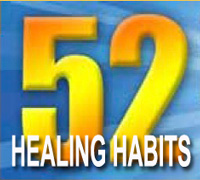An email with an attachment regarding UNILAB HEALTH ADVISORY is now being circulated to create awareness. So, I decided to post it here in order to promote prevention and control to help not only those who are survivors of typhoon Ondoy but also anyone who could be at risk mainly due to urine-polluted environment.
Please read on and pass the info to help more people:
UNILAB HEALTH ADVISORY
LEPTOSPIROSIS
(Abstracted by Medical and Regulatory Affairs from the Fact Sheet of WHO)
LEPTOSPIROSIS
(Abstracted by Medical and Regulatory Affairs from the Fact Sheet of WHO)
What is leptospirosis?
Leptospirosis is an infection caused by bacteria (Leptospira), that are transmitted directly or indirectly from animals to humans. Human to-human transmission is rare.
From which animals can you get leptospirosis?
Many animals can harbour leptospires in their kidneys and act as source of infection to humans and other animals. Rodents are incriminated as a primary source of infection to human beings. In the Philippines, rodents and dogs are recognized as sources of infection.
How do you get leptospirosis?
Leptospirosis results primarily from direct or indirect exposure to the urine of infected animals. Moisture is an important factor of the survival of the leptospires in the environment. Other modes of transmission of infection include handling infected animal tissues and ingestion of contaminated food and water.
How do leptospires enter the body of humans and animals?
Leptospires can gain entry into humans through cuts and abrasions in the skin, through the nose, mouth, and eyes, and perhaps through waterlogged skin. Occasionally, they may enter the human body via the inhalation of droplets of urine or via drinking-water.
Can leptospires be transmitted from human to human?
Yes, but rarely. They can be transmitted human-to-human by sexual intercourse, transplacentally from the mother to the fetus and via breast milk to a child. Urine from a patient suffering from leptospirosis should be considered infectious. As leptospires can be cultured from blood, this should be viewed as infectious up to 7–10 days of illness.
How long is the incubation period?
The incubation period is usually 7–10 days, with a range of 2–30 days.
Where does leptospirosis occur?
The disease is found mainly wherever humans come into contact with the urine of infected animals or a urine-polluted environment. It often has a is seasonal, increasing with increased rainfall or higher temperature. Epidemics may be associated with animal or sewage contamination of water, or follow natural disasters (typhoons and floods).
Who are at risk?
At risk are farm/agricultural workers, pet shop workers, veterinarians, sewer workers, abattoir workers, meat handlers, and the military. Other groups at high risk for leptospirosis include survivors of natural disasters (e.g. flooding) and those engaged in water sports.
When should a diagnosis of leptospirosis be considered?
The diagnosis of leptospirosis should be considered in anyone presenting with:
1. an abrupt onset of fever
2. chills
3. conjunctival suffusion (redness of the eyes)
4. headache
5. myalgia (muscle pain and soreness) and
6. jaundice (yellowing of eyes and/or skin).
Conjunctival suffusion and muscle tenderness, most notable in the calf and lumbar areas, are the most distinguishing physical findings. Others may complain of cough, difficulty of breathing, nausea, vomiting, abdominal pain, diarrhea, joint pains and skin rash.
Suspicion is further increased if there is a history of occupational or recreational exposure to infected animals or to an environment potentially contaminated with animal urine (flood). Once the possibility of leptospirosis has been considered, appropriate diagnostic tests and clinical management should be instituted.
How dangerous is leptospirosis?
Leptospirosis can be treated. However, it can be deadly in about <5% to 70% in different parts of the world. Complications include kidney failure, liver failure and lung bleeding. Major improvements in medical care however, have been made in recent years.
What is the optimal treatment for leptospirosis?
Consult a physician immediately once symptoms appear. Treatment with effective antibiotics should be initiated as soon as the diagnosis of leptospirosis is suspected and preferably before the fifth day after the onset of illness.
How can leptospirosis be prevented and controlled?
Prevention and control should be targeted at :
(a) the infection source, e.g.rats
• removal of rubbish and keeping areas around human habitations clean;
• encourage people not to leave food around, especially in recreational areas where rats may be present;
(b) the route of transmission between the infection source and the human host;
• leptospires are rapidly killed by disinfectants and desiccation, so keep surroundings clean and dry.
• small areas, such as floors, can be cleaned and disinfected, but disinfecting large natural areas such as lakes or rivers is not possible
• avoid contact with animal urine, infected animals or an infected environment,
* avoid wading in the floods
* protective clothing should be worn and wounds covered with waterproof dressings to reduce the chance of infection if exposure is likely, e.g. floods, occupational or recreational exposure.
(c) infection or disease in the human host
• early recognition and treatment
• care in handling urine and blood of those infected
How can humans be protected?
Increased awareness of the disease is important for early recognition and treatment. Doxycycline has been reported to give some protection against infection and disease. A vaccine for dogs is available, but a vaccine for humans is not available in the Philippines.



No comments:
Post a Comment